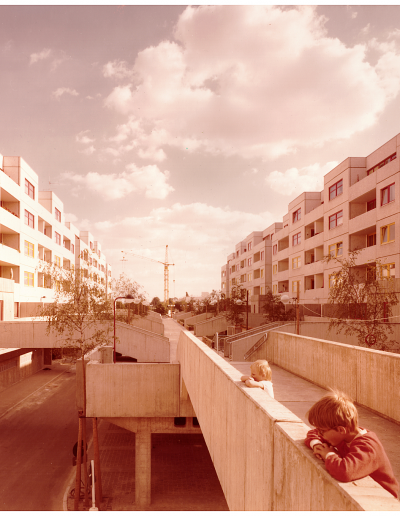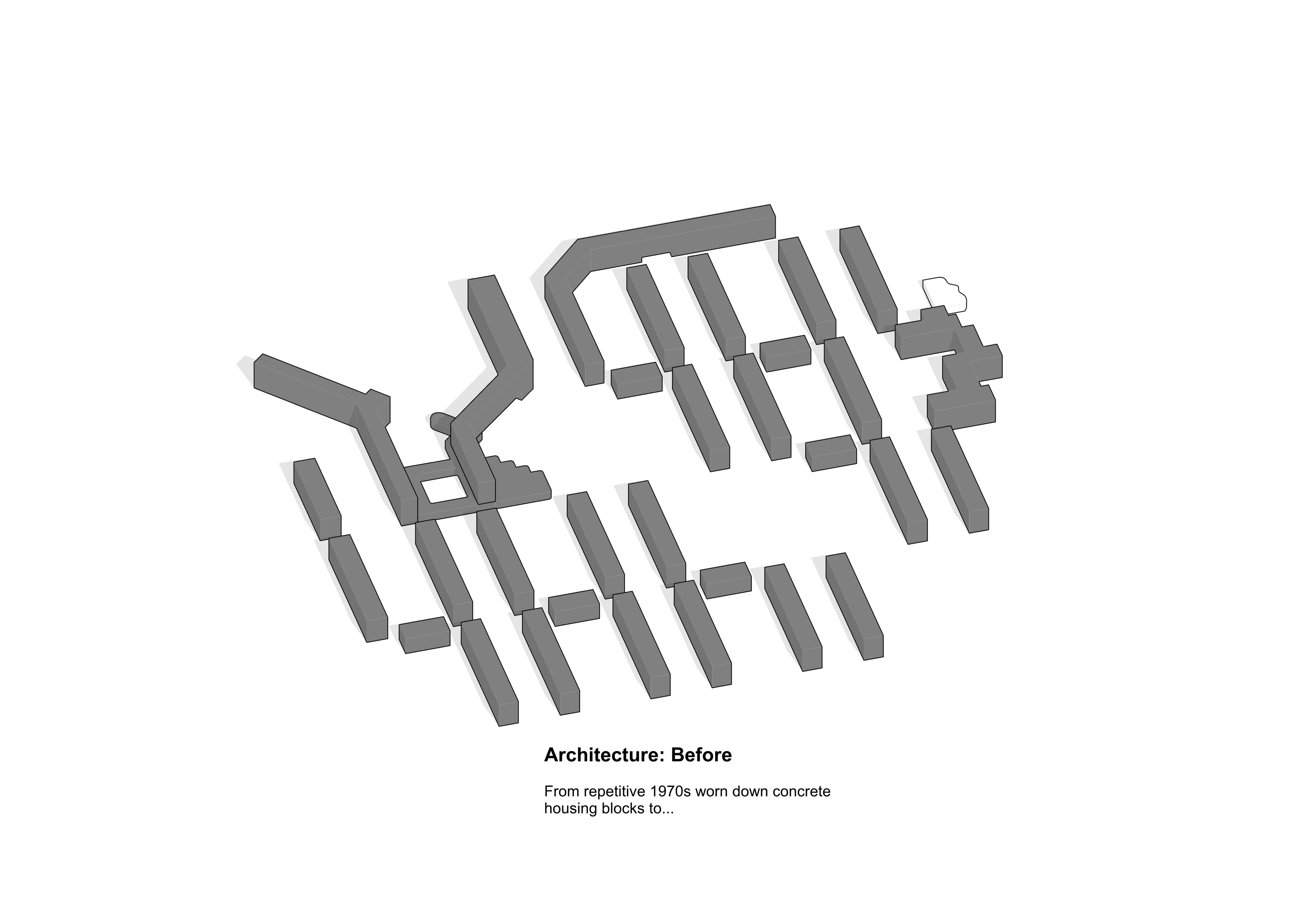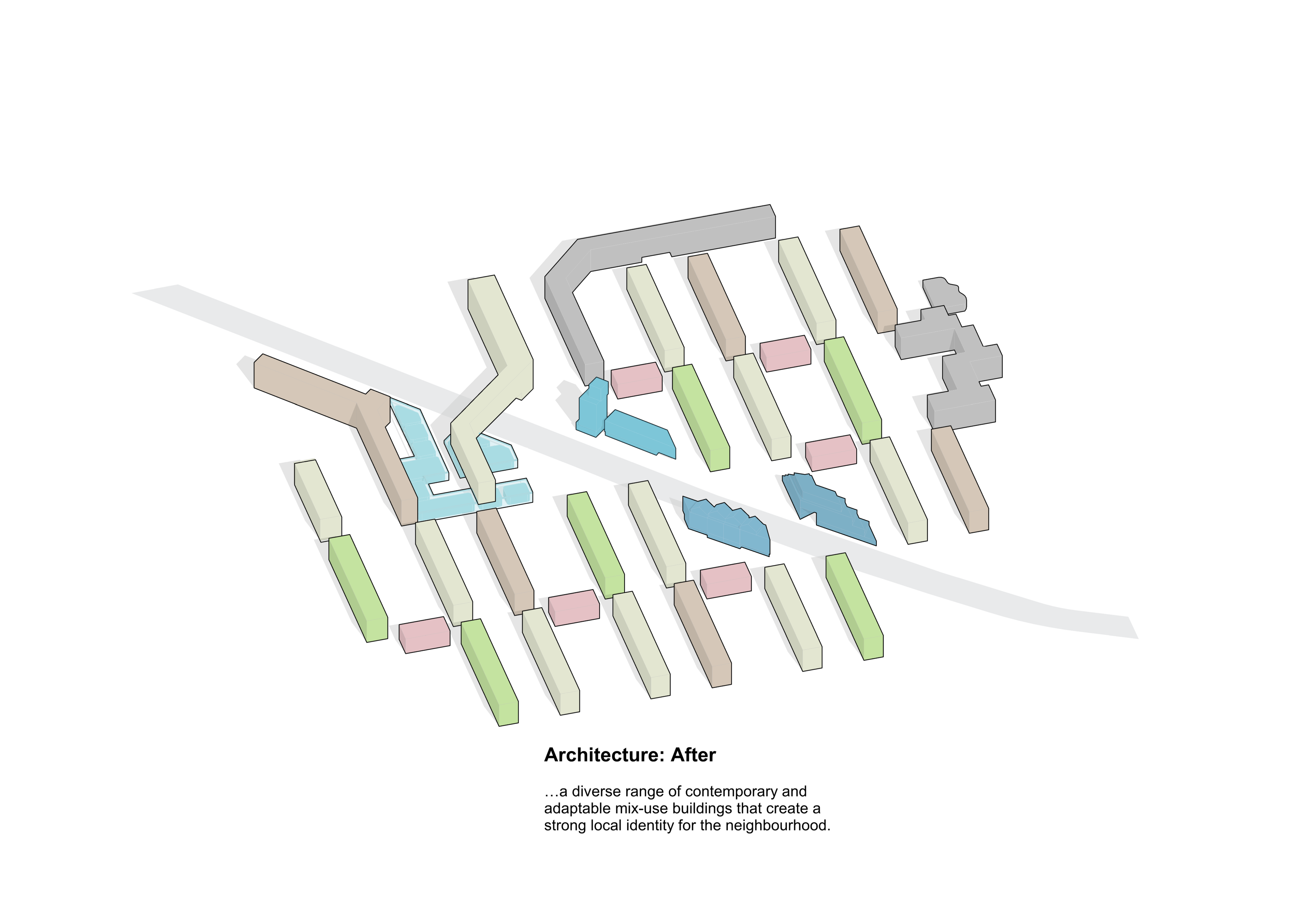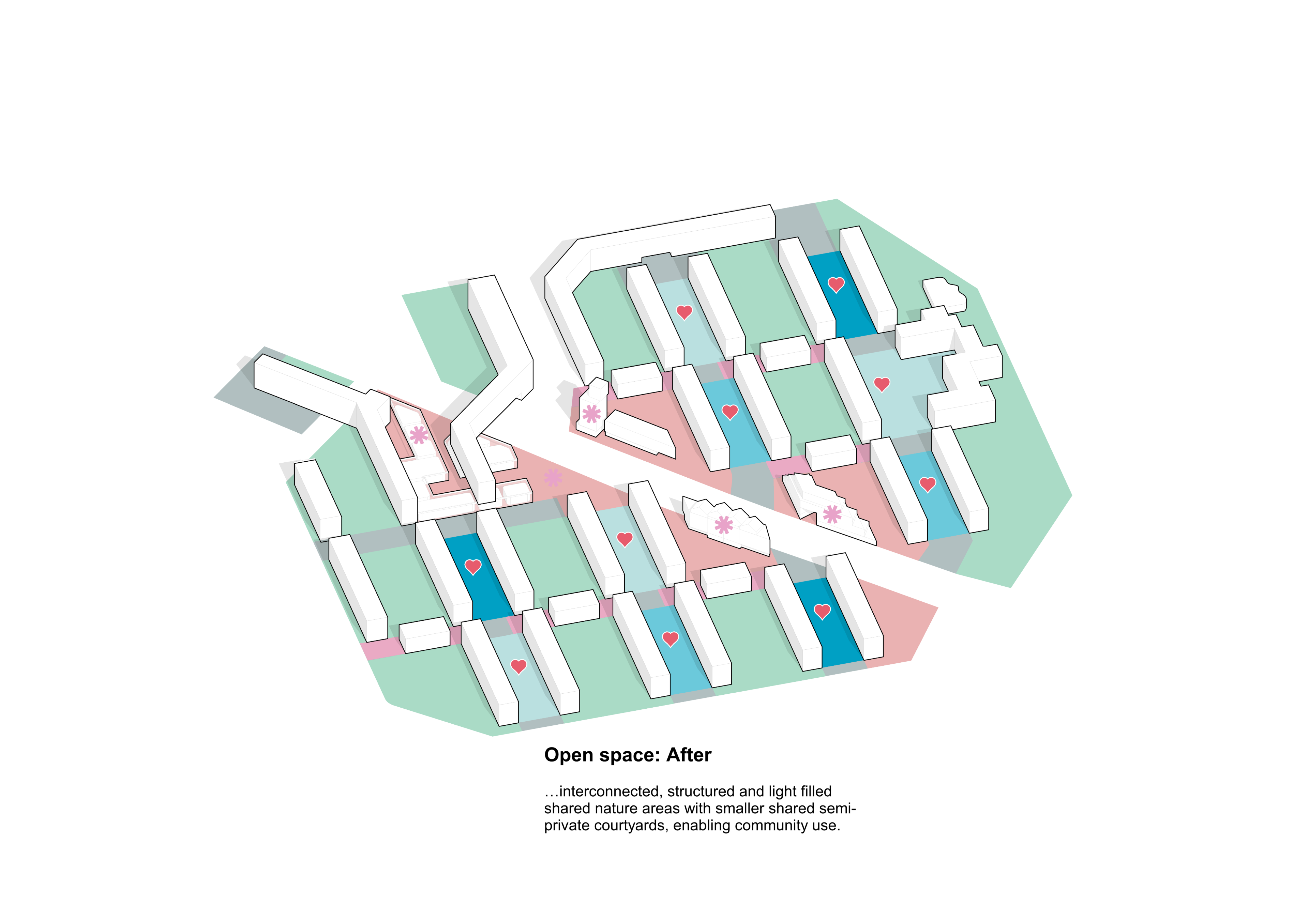Highdeck Siedlung
The Highdeck Siedlung is a large social housing project in Neukölln, located on a 33 hectare site with 2500 homes next to the former border between east and west Berlin. Designed by my late father, architect Rainer Oefelein and his partner Bernard Freund after winning a design competition in 1970, this project represents the beginning of Oefelein Architecture in Berlin.
This project has aged over the past forty years and faces many social challenges today. We aim to combine our unique knowledge of this project with our international experience to nurture and revitalise it into a desirable location for living, working and learning in the future.
We are discussing future possibilities with Vonovia, a large housing association and aspire to help them unlock its potential.
Highdeck Siedlung
Location Neukölln, Berlin
Type Urban Regeneration
Scale 33Ha | 2500 Homes
Project Duration 2 020-
Client TBC
The planning concept
The design competition in 1970 aimed to combat the Berlin housing shortage with a design that would successfully provide a large quantity of repetitive affordable homes in a short period of time with modular concrete construction efficiency. Individuality, diversity and flexibility were not in the architects’ design brief as they would be today.
The architect’s urban design concept responds to the values of this time by separating people from traffic via a series of elevated decks and walkways, known as the Highdecks.
Flanked by housing blocks on either side, the Highdecks overlook quiet green zones to the rear, and were designed to be active communication zones and public spaces for kids to play and people to interact. The cars and all moving traffic were removed and placed on the street underneath.

50 Years Highdeck
Since its completion in 1981 there have many changes to the areas and the way in which we live:
-
The estate is located on the Sonnenallee directly adjacent to the former border between East and West Berlin. At the time of building it was a cul de sac, but is now a city road connecting the east and west.
-
The community has changed, with today’s residents coming from many cultures and speaking many languages.
-
The way we plan for new large communities has changed – it’s now unlikely that 2500 affordable homes would be placed together in a single location; instead these homes would be dispersed through the city, offering mixed use, diversity and increased opportunity to reflect contemporary urban planning policies.
-
Connectivity and technology now enable people to work and learn from home, something that was inconceivable in 1970.
-
Our mobility has changed, with fewer people driving to work and increased use of public transport, bikes and scooters.
With all these changes, alongside decades of physical and social neglect, the housing estate is in need of revitalisation; the building’s fabric and technical services are in need of modernisation, disabled access and shared facilities need upgrading, the open spaces and gardens need structure and maintenance, the streets need brightening up, and importantly the image of the estate as a social hotspot needs to be transformed into a safe and comfortable location with opportunities for its residents.
















